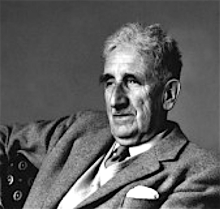
Alfred Claude Burlingham was born in Evesham, Worcestershire, England on 20 May 1885 and was articled to Thomas Gildart Mansell (1866-1929) and Edward Mansell (1860-1941) of Mansell & Mansell in Birmingham from 1902 to 1905. Having completed his articles he remained with them as their assistant. He also attended Birmingham Municipal School of Arts and Crafts. He qualified as an architect in 1908 and later that year was elected an Associate of the Royal Institute of British Architects (ARIBA).
In 1909 Burlingham moved to Sutton in Surrey where he formed a partnership with Alfred Taylor [1]. Among his earliest projects were private houses in Purley, Wallington and Sutton in Surrey; work on the estates of Lord Falmouth in Kent; and a home for nurses in Evesham, Worcestershire. Burlingham's most significant architectural project during this period was Abbotswood, a residential estate in Guildford, Surrey, developed between 1912 and 1925. Burlingham designed most of the original houses on the estate.
The influence of the Arts and Crafts movement is evident in much of Burlingham's early work.
Following their involvement in the Abbotswood estate, Burlingham and Taylor went on to develop other residential estates in Guildford and designed cottages in Burpham, Surrey; shops, houses and a church in Cheam, Surrey; and the Cuddington golf clubhouse in Banstead, Surrey.
Burlingham designed several office buildings in London, probably his most significant of which was Imperial House in South Street, City of London, which he designed for the London & Manchester Insurance Company. It was completed in 1932 and at the time was the largest office building in London.
In 1927 Burlingham was elected a Fellow of the Royal Institute of British Architects (FRIBA).
Burlingham address was given as 30 and 31 Port Street, Bengeworth St Peter, Worcestershire in 1901; Craycombe House, Devonshire Road, Sutton, Surrey in 1914; Westwood Ho, Abbotswood, London Road, Guildford, Surrey in 1916 and 1923; Central House, Finsbury Square, London in 1923 and 1950; and Milford Corner Cottage, Milford-on-Sea, Hampshire in 1963. He died in Milford-on-Sea, Hampshire on 30 May 1963.
A biographical file on Alfred Claude Burlingham is available on request from the Enquiry Desk, Royal Institute of British Architects Library, London
______
[1] Alfred Taylor has been described as both a developer and as an architect. If he was an architect, he may have been Alfred Ernest Taylor (c.1865-?)
Directory of British Architects 1834-1914. Compiled by Antonia Brodie, et al. Volume 1: A-K. London; New York: British Architectural Library, Royal Institute of British Architects/Continuum, 2001
Drakeford, Michael. A History of Abbotsford. Chichester: Phillimore & Co Ltd., 2008
‘Obituary’ The Builder vol. 204, 7 June 1963 p. 1133